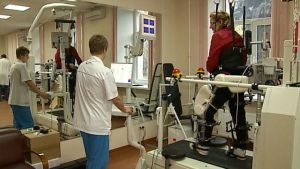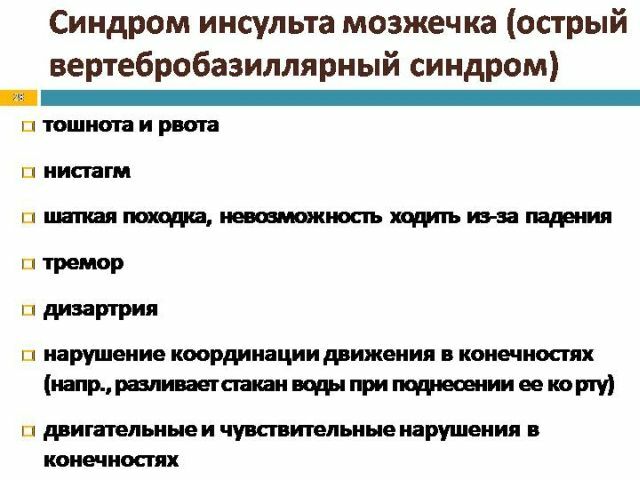Thrombolysis for ischemic stroke (thrombolysis, thrombolysis) can restore blood flow in diseased vessels and the brain reduce the damaged area and subsequently minimize the effects of a stroke, and prevent disability patients. Thrombolytic therapy refers to high-tech types of medical care (VMP) and is carried out according to the protocol VMP.

testimony
Symptoms of strokes vary. The patient may be concerned about a headache, then depending on the place where there was cerebral ischemia (oxygen deprivation of the brain tissue due to obstruction luminal thrombus vessels of the brain), it may be a violation of speech, loss of memory, dizziness and unsteadiness of gait, weakness in the limbs or the left on right.
A great role in the development of ischemic stroke play previous uncontrolled hypertension, cardiac arrhythmias. uncontrolled diabetes mellitus (with an increase in blood glucose levels higher than normal).
Thrombolysis for stroke conducted under strict indications. ischemic stroke diagnosis should be supplied by means of a neurological examination and computerized tomography, and differentiated from other diseases having similar symptoms.
The age of the victim must be between 18 and 80 years. Since the onset of the disease to the patient's arrival at the hospital, where such treatment is conducted, should be not more than 3 hours.
Contraindications
In thrombolytic therapy, there are contraindications:
- with the appearance of the first symptoms until the patient's arrival at the hospital has been more than 3 hours;
- patient receives anticoagulant (warfarin) or thrombin inhibitors (Ksarelto, Pradaksa);
- the patient is suffering from diabetes type 1 or 2;
- cirrhosis of the liver;
- bacterial endocarditis;
- history is an indication for the presence of hemorrhagic diathesis;
- the results of a CT or MRI scan revealed intracranial hematoma, arteriovenous malformations, intracranial tumor formation;
- ported in the last 3 months of myocardial infarction;
- pregnancy or the first 10 days after delivery.

The essence of therapy
Thrombolytic therapy can quickly destroy and remove from the brain blood vessels clot that led to the development of stroke. Thrombolysis can be systemic or local.
Method thrombolysis thrombolytic agent and dosage depends on various factors. In systemic thrombolysis thrombolytic agent is administered intravenously, it is carried through the bloodstream in the organism, dissolving thrombi. The disadvantage of this method is the high risk of bleeding.
Local thrombolytic therapy for ischemic stroke is performed in the operating room physician radiologists under ultrasound and angiography. Using catheter-thrombolytic drug is introduced directly into the vessel with thrombus located therein. This requires a small amount of the drug reduced the risk of bleeding.
thrombolytic drugs
There are two groups of drugs, thrombolytics for TLB. For drugs of the first group include streptokinase, its drawback - a large number of bleeding complications in patients. The preparation of the second group (the more modern, created by genetic engineering) - alteplase, the risk of bleeding and allergies when applied small.



